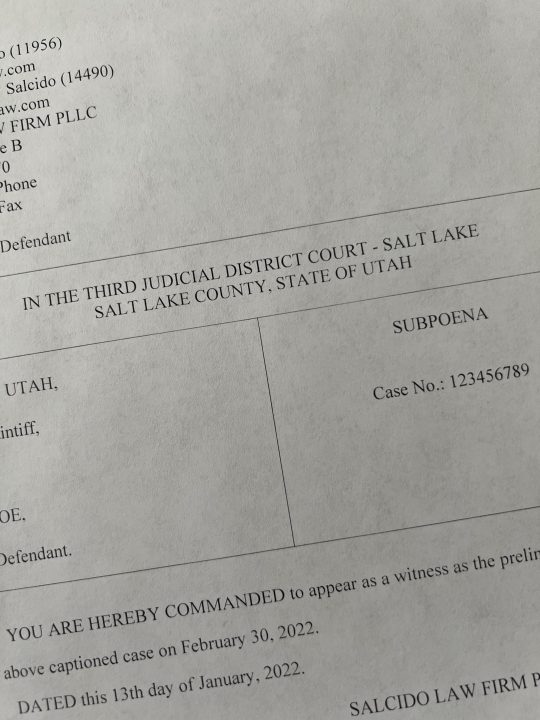Nearly every day we speak with clients with questions about whether or not a particular piece of evidence, they believe will help in their case, may be admissible in court. Often in both criminal cases and domestic matters such as divorce, a party may want to introduce character references believing that if the judge hears other people saying nice things about them, it will somehow help in their matter. Character references often are important for things like sentencing in a criminal matter but rarely play a role or can even be admitted as evidence in other circumstances. Another common question we receive is who can testify on behalf of a person at trial. Often parties to civil litigation or criminal cases want to call everyone they can think of to testify in their case whether or not that person actually has anything relevant to testify to. To help you understand how the law determines what evidence will be admissible in court, consider the following 4 general rules below:
- Relevance – The very first question you should ask yourself in determining whether or not a particular piece of evidence can be introduced into court is this – Is the evidence relevant? Generally speaking, to be relevant, the evidence must relate to the time, event, or parties involved in the case. For some reason, we find many people never take this first fundamental step of asking themselves something like , “ok I would really like the judge to know that I got an A on my 9th grade math test, but is this actually relevant to my pending custody dispute?” That example is a little ridiculous but illustrates the point, if it is clearly not relevant to the time, event, or parties at issue in the case, its probably not admissible, and not only that, you probably shouldn’t even attempt to introduce it.
- Foundation – Lets say you have established the evidence you wish to bring to court is relevant, the next question you should ask yourself is this, is there a proper foundation? You must lay the foundation for your evidence to be introduced. What does this mean? You must show that the evidence is reliable. For instance, if you want a particular person to testify as a witness at your trial, when they take the stand, you want to first ask them foundation questions to establish they are a competent witnesses. You must be able to authenticate evidence such as showing when emails were sent, to who, etc. If you are introducing scientific evidence, you will need to demonstrate the evidence is reliable or call experts to testify as to the validity of your claims.
- Form – Next, your evidence needs to be in the proper form. Example, if you are questioning a witness you have called in your case, you must ask them non leading questions. If you are cross examining a witnesses, leading questions are fine. Experts can only give expert opinions, lay opinions can be given by any witness. There is also something called the “best evidence rule” which states to prove the terms of a writing, the original should be produced if the terms of the writing are material. Therefore in a contract dispute, the original signed contract would be the best form as opposed to an unsigned copy or something else.
- Exclusionary Rules – Finally, assuming your evidence is relevant, supported by a foundation, and is in the proper form, you still must be sure one of the many exclusionary rules of evidence do not apply. One such rule is referred to as a Rule 403 exclusion which means if the evidence you are seeking to introduce would be more prejudicial to a judge or jury than probative, it may excluded. There are some exclusions that apply for public policy reasons. For instance, settlement negotiations are non admissible in court. This is to help promote the free exchange of settlement proposal without the risk of such communications being used against a party later. Privilege is another exclusionary rule. An attorney cannot be compelled to testify against his/her client, neither can a husband/wife be compelled to testify one against the other. The Hearsay exclusion is one many people are familiar with. Hearsay is generally any out of court statement, made by someone other than the person testifying, offered to prove the truth of the matter asserted. And finally there is another principle in the law called the parole evidence rule which apples mostly to contract law.
Assuming you have run your evidence through the 4 general rules stated above, the evidence is relevant, there is foundation, in the proper form, and not exclusionary rule applies, you will likely be able to present such evidence in court. Having a knowledgeable Utah Attorney represent you in court helps to ensure you will get all the necessary relevant evidence introduced in your favor. For more information or to discuss the details of your evidentiary concerns, contact a lawyer at Salcido Law Firm today.




